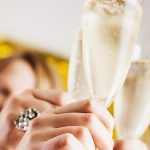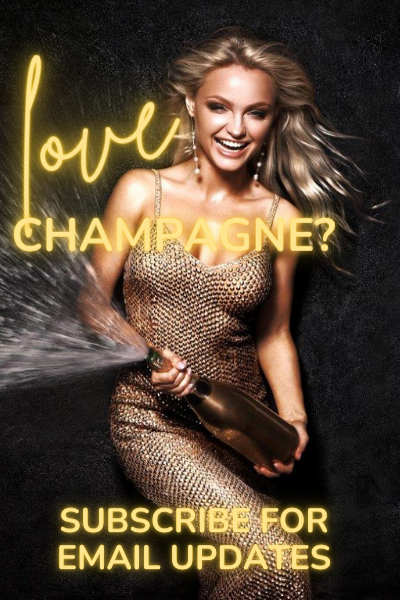
My Top Five Champagne Predictions for 2022
2021 was another tumultuous year for the champagne region and humanity in general.
Champagne continued to face the realities of climate change with a difficult harvest season and year-round impacts from COVID on productivity, tourism, supply chains and demand for champagne as the world came in and out of lockdowns and isolation.
What 2022 holds for us is anyone’s guess so I have pulled out my crystal ball and gazed deeply into it to come up with my top champagne predictions for 2022.
As well as calling on the power of my crystal ball, my list is driven by the important trends that have emerged over the last few years and acknowledges that climate change and COVID are both going to continue to hold their grip on the world around us for the year ahead. The list also factors in a few broader social trends which I have saved for the end of the list, particularly number 6 which is truly the most “shocking” of them all!
1. More interest and demand in natural, organic and sustainable champagnes
Climate change isn’t going anywhere. Winemakers the world over are facing the challenges of higher temperatures, lower temperatures, unseasonable temperatures, unpredictable weather events and natural disasters the likes of which we have never seen before. To adapt and also to join the global effort to minimise their own impact on the environment, winemakers are increasingly looking at the techniques they can employ from the vineyards to the cellars and through supply chains that are more sustainable.
It is a complex issue with big differences between natural, organic, biodynamics and sustainable winemaking. Watch out for my post that will break down the differences and all the related terms and techniques that will be coming out next month to help you navigate your way around this trend.
2. The emergence of the forgotten grapes of the Champagne appellation
While chardonnay, pinot noir and pinot meunier are the heroes of the region, there are actually seven grapes producers are allowed to use to make champagne. These are chardonnay, pinot noir, pinot meunier, pinot blanc, pinot gris, arbane, and petit meslier (read more here).
Few producers generally use the final four varieties in this list but climate change is changing that.
A bit of a refresher on the region…. The Champagne region sits at the northernmost limit for winemaking areas. Due to its geography, Champagne experiences a surprisingly cool climate for grape growing, or more specifically for grape ripening because it is warmth and sun that ripen grapes (read more here).
And this is the foundation for one the hallmarks of the champagne character… The cooler temperatures mean the grapes rarely fully ripen which leads to higher acidity and lower sugar in the grapes and the resulting wines.
But as the average temperatures in the region continue to rise, it is becoming harder to create that hallmark acidity the chardonnay in Champagne is so well known for and so winemakers are experimenting with pinot blanc, pinot gris, arbane, and petit meslier. I tried a 100% petit meslier champagne a few years ago in Champagne at Duval Leroy…. it was so acidic it was barely drinkable. But it was easy to imagine that with a little extra ripening in a warmer climate as chardonnay grapes gets too ripe, the petit meslier could eventually be right on the mark.
I might need to change up my Champagne Style Guide* to accommodate the shift in styles!
3. Still wines from Champagne
Another trend that is in part a response to climate change is the increase in still wines produced in the Champagne region. Still wines from the Champagne region are known as Coteaux Champenois.
While Coteaux Champenois have been produced in the region for a long time, as a wine they have never really been well regarded. One winemaker in Champagne explained it from experience, Coteaux Champenois rarely stacked up to the quality of French wines from the surrounding regions of Burgundy or Bordeaux where the winemakers are arguably the best in the world at making wine. The Champagne region on the other hand – as I explained above – makes incredible champagne thanks in part to its cooler climate.
But as the temperatures increase in the Champagne region, and the climate becomes more like that of Burgundy or Bordeaux (and don’t forget those regions are becoming hotter too), winemakers in Champagne have seen an opportunity and are producing Coteaux Champenois that are better quality.
When houses like Louis Roederer and Charles Heidsieck start to release their own range of still wines, as they both did in 2021, you know you are onto something.
Increasingly we can expect to see more big houses and small producers alike producing still wines and if you enjoy drinking still wine too – as I do from time to time – you can look forward to trying new wines from houses and makers we know, trust and respect.
4. Demand for champagne remains but curiosity for quality sparkling is on the rise
There is still incredibly strong demand for champagne but a lot of what is happening across the globe is impacting prices. I have been updating my posts over the last month and have seen a clear trend in the price of champagne having increased by $10 – $20 a bottle over the last two or three years.
At the same time champagne supply is uncertain, our economy is unstable, and the job market has been unpredictable, property prices are at record highs and the rental market is going crazy, it’s only natural that even the most committed champagne lover might be curious to explore their options.
5. We don’t just buy what brands do – we buy who they are and why and how they do it
Since Madame Clicquot first put a label and a logo on a wine bottle and patented the colour of the Yellow Label back in 1877, people have picked their wines based on how much they like the label or the stories they know about the brands. Madame Clicquot, Lilly Bollinger, Champagne Charlie, Dom Perignon and Lady Gaga/Lenny Kravitz, Jay-Z and the Ace of Spades (Armand de Brignac).. the list of stories that impact our champagne consumption goes on.
And that will continue… at least while I have an entire blog dedicated to telling stories about champagne, I hope it will.
In an age when information is everywhere and a quick google search can reveal a LOT of information about a brand, stories matter. Particularly in appealing to the next generation of wine drinkers, Gen Z, who were born 1997 – 2012 or currently aged 10 to 25, values and ethics are fundamental to their purchase behaviour.
More than ever before, this next generation wants to know more about the people behind the brands and what those people stand for, from their sustainability practices to diversity policies.
How winemakers reach and speak to these audiences will have to change and that will impact all markets, but I think it’s a good thing. But then I do write a champagne blog and work in marketing for a living so I am probably biased.
6. Low- and no-alcohol bubbly
Five years ago, when I started Bubble & Flute, if you asked me to try a low or no-alcohol sparkling wine, I would have thought you’d gone mad.
But now, low and no alcohol wines are widely available and there are dozens of online businesses dedicated to selling booze-free wines. According to Neilson and Wine Spectator, de-alcoholised wine (also known as non-alcoholic wine) was the second-fastest-growing category of wine last year, with sales rising by 43 percent in the first half of last year. Now while I am still researching if there are any champagne producers making no-booze bubbles (if you know please share), de-alcoholised sparkling wine and sparkling roses are very popular.
This is another socially and culturally driven trend that has not only changed our habits but our vocabulary! Feb-fast, Dry July, Oct-Sober are all part of our everyday language and have been popularised by a desire for better health and wellbeing and supporting important causes.
Maybe it’s a reaction to over-consumption during lockdowns.
Maybe it’s the result of living in the information age and being able to access for ourselves information about what alcohol does to our bodies if we abuse it.
Maybe we don’t want to end up ordering ‘Quit Like a Woman’ from Amazon and NOT remember it. (That’s a reference to Miranda from And Just Like That.)
Maybe – like me – you’re just curious.
Whatever the reason, it’s clear from the growing market size that plenty of people seem to want to explore moderating their alcohol consumption (and caloric intake) but still enjoy the experience and the taste, all without the effects of alcohol like impaired judgment and function and a hangover!
Stay tuned for my taste test of a selection of booze-free bubbles, which I’ll share in time for Febfast.
If you are already exploring any of these trends, post a pic and tag @bubbleandflute #happychamper.
Bubble & Flute promotes the responsible consumption of alcohol for individuals of legal drinking age in their country. Prices correct at time of publication but may change.
*Bubble & Flute Champagne Style Guide
After more than a decade of champagne tastings with everyone from beginners to fully-fledged champs-snobs, I have developed a theory that everyone has a basic, favourite style of champagne they’ll always choose over everything else.
I have developed my Bubble & Flute Champagne Style to reveal your champagne style and suggest more champagnes to try, based on your style, that I think you are totally going to love!
Once you know your champagne style you will visit wine shops or shop online feeling more confident and comfortable selecting new champagnes because you know and understand what style of champagnes you like most.








